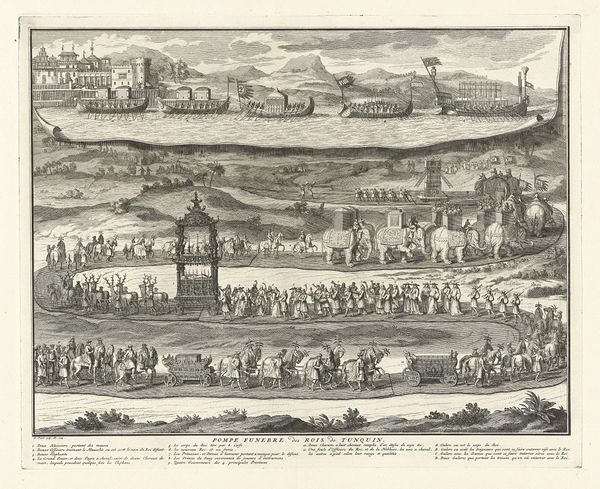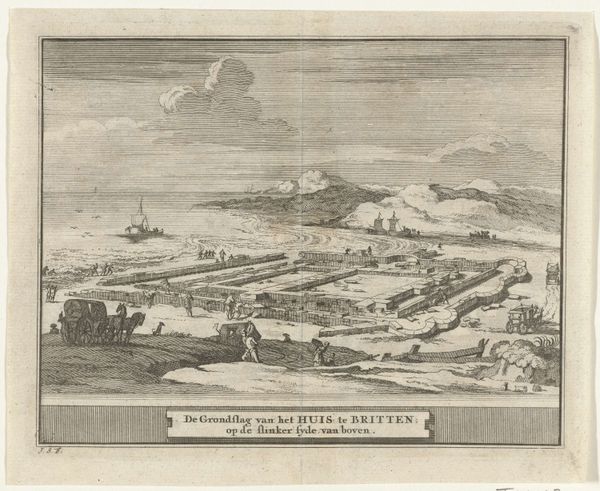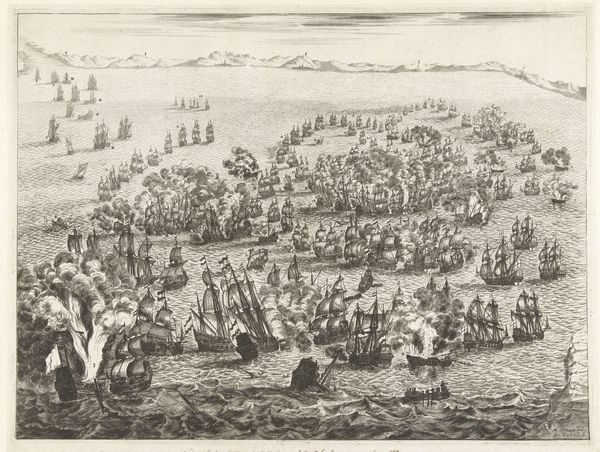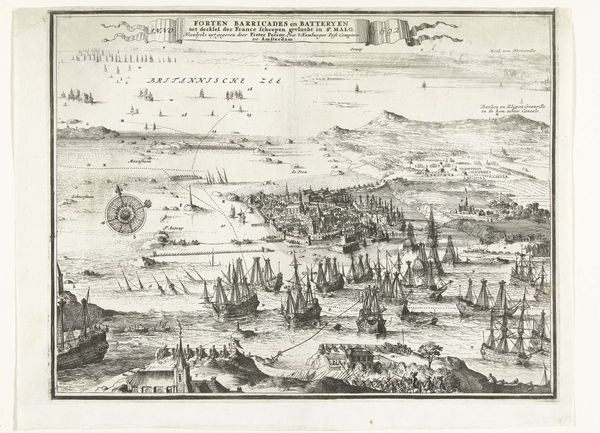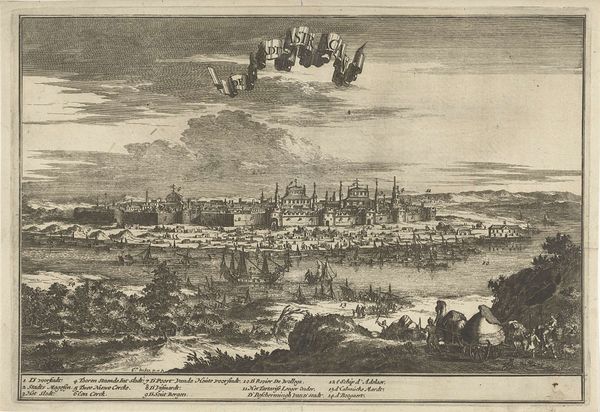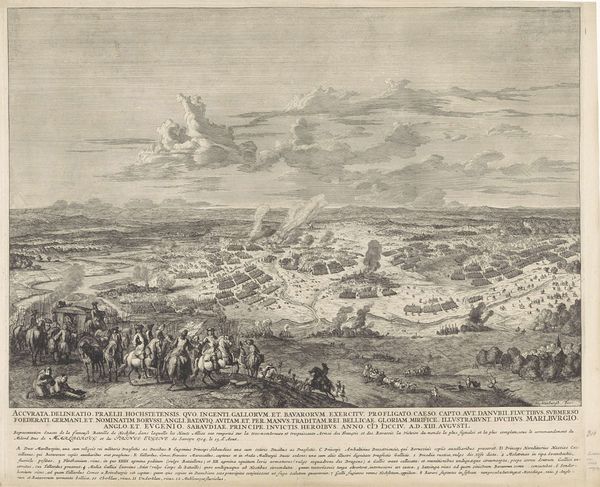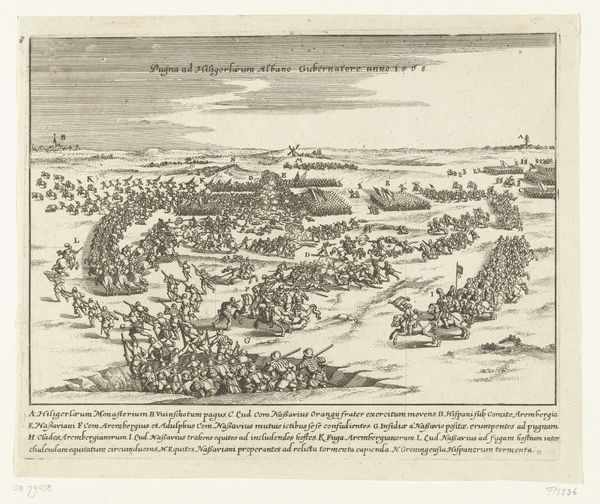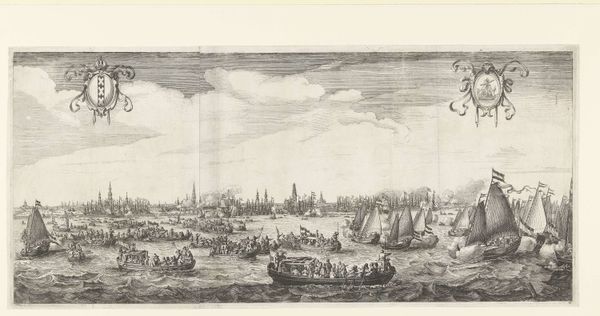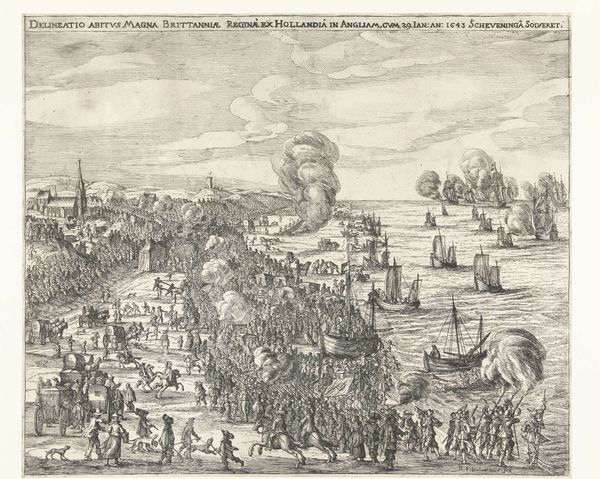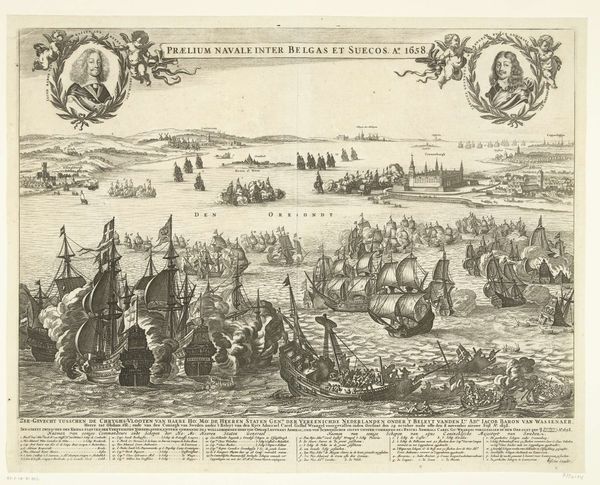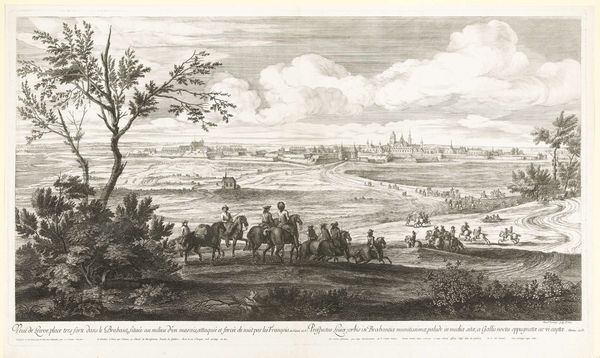
print, etching, engraving
#
landscape illustration sketch
#
baroque
#
mechanical pen drawing
# print
#
pen illustration
#
pen sketch
#
etching
#
landscape
#
personal sketchbook
#
sketchwork
#
pen-ink sketch
#
pen work
#
sketchbook drawing
#
history-painting
#
storyboard and sketchbook work
#
engraving
Dimensions: height 426 mm, width 540 mm
Copyright: Rijks Museum: Open Domain
Curator: Let's examine this rather compelling etching, "Tocht naar Chatham en de verovering van het eiland Sheppey, 1667." It documents the Raid on the Medway, an audacious Dutch naval attack during the Second Anglo-Dutch War. Editor: It feels almost like a storyboard. Chaotic, but fascinating in its detail. There’s so much texture, a landscape teeming with… strife, to say the least. I'm drawn to those billowing plumes of smoke. Curator: Structurally, the artist—whose identity remains anonymous—cleverly divides the composition into distinct registers. We see an aerial perspective above, shifting to ground-level action below, providing multiple viewpoints on the same event. Notice the use of line. Editor: Yes, there is extraordinary linearity throughout. You see the very detailed lines that almost seem frantic when capturing battle? How might this etching been perceived by Dutch versus English audiences at the time, or generations later? Curator: Doubtless, audiences would interpret its symbolism profoundly different, even viscerally. But note how this linearity lends a certain dispassionate clarity—almost diagrammatic—to the account, belying the obvious horror of the event. The visual architecture speaks to triumph and control on one hand, abject chaos on the other. Editor: And that text flanking the scenes. Did that shape how this act of war was memorialized and remembered, becoming not just an image but an entire… statement? What power that text added. It makes the illustration feel less objective. Curator: Indeed. The placement of text isn't incidental. It integrates the viewer’s interpretation into a historically fraught record. Moreover, its physical presence—the deliberate engraving marks on the page—becomes an artifact itself, inseparable from the events portrayed. It has to influence our viewing, because what we see could be propaganda or fact. Editor: To consider, therefore, what exactly counts as objective in historical documentation becomes impossible. It certainly prompts reflection on the function of historical memory. Curator: Precisely, how such visual narratives—defined by their inherent structures and visual language—shape the broader socio-political consciousness, and contribute, not merely reflect. Editor: What a provocative dance between the material and the narrative!
Comments
No comments
Be the first to comment and join the conversation on the ultimate creative platform.

